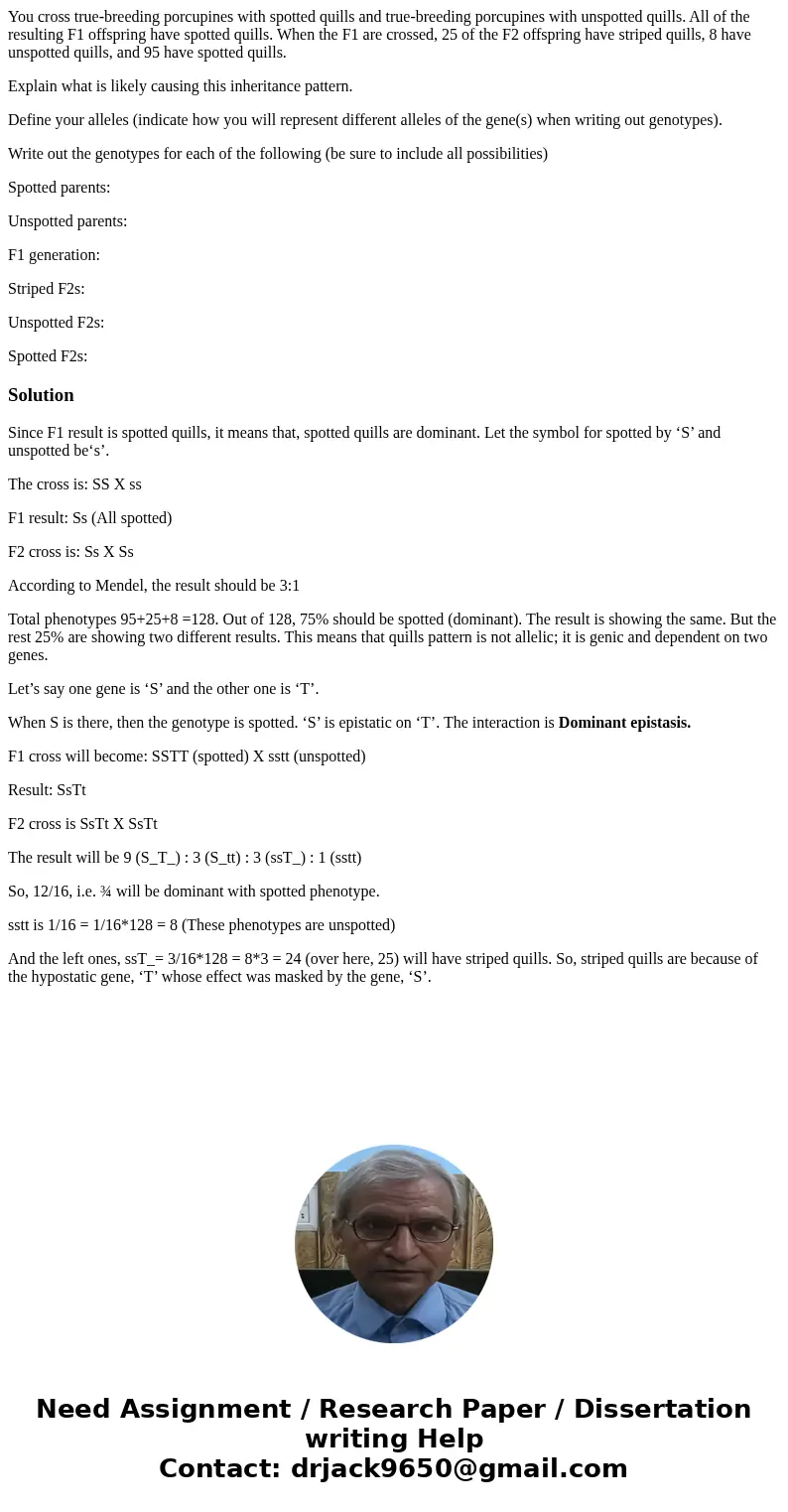You cross truebreeding porcupines with spotted quills and tr
You cross true-breeding porcupines with spotted quills and true-breeding porcupines with unspotted quills. All of the resulting F1 offspring have spotted quills. When the F1 are crossed, 25 of the F2 offspring have striped quills, 8 have unspotted quills, and 95 have spotted quills.
Explain what is likely causing this inheritance pattern.
Define your alleles (indicate how you will represent different alleles of the gene(s) when writing out genotypes).
Write out the genotypes for each of the following (be sure to include all possibilities)
Spotted parents:
Unspotted parents:
F1 generation:
Striped F2s:
Unspotted F2s:
Spotted F2s:
Solution
Since F1 result is spotted quills, it means that, spotted quills are dominant. Let the symbol for spotted by ‘S’ and unspotted be‘s’.
The cross is: SS X ss
F1 result: Ss (All spotted)
F2 cross is: Ss X Ss
According to Mendel, the result should be 3:1
Total phenotypes 95+25+8 =128. Out of 128, 75% should be spotted (dominant). The result is showing the same. But the rest 25% are showing two different results. This means that quills pattern is not allelic; it is genic and dependent on two genes.
Let’s say one gene is ‘S’ and the other one is ‘T’.
When S is there, then the genotype is spotted. ‘S’ is epistatic on ‘T’. The interaction is Dominant epistasis.
F1 cross will become: SSTT (spotted) X sstt (unspotted)
Result: SsTt
F2 cross is SsTt X SsTt
The result will be 9 (S_T_) : 3 (S_tt) : 3 (ssT_) : 1 (sstt)
So, 12/16, i.e. ¾ will be dominant with spotted phenotype.
sstt is 1/16 = 1/16*128 = 8 (These phenotypes are unspotted)
And the left ones, ssT_= 3/16*128 = 8*3 = 24 (over here, 25) will have striped quills. So, striped quills are because of the hypostatic gene, ‘T’ whose effect was masked by the gene, ‘S’.

 Homework Sourse
Homework Sourse